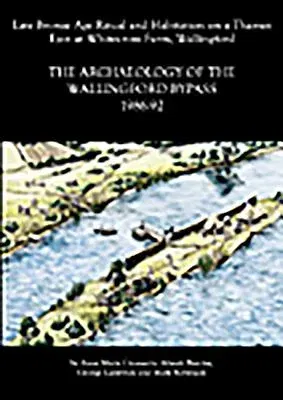The site at Whitecross Farm, including timber structures located on the
edge of the eyot, and a substantial midden and occupation deposit has
been securely radiocarbon-dated to the late Bronze Age. The late Bronze
Age artefact assemblages are suggestive of a high-status site, with a
range of domestic and ritual activities represented. The bank of the
Grim's Ditch earthwork was found to have preserved evidence of earlier
settlement, dating to the Neolithic and Bronze Age, and a sequence of
cultivation, including ard marks and 'cord-rig' cultivation ridges.
Pottery and radiocarbon analysis dated the earthwork to the end of the
late Iron Age or the early Roman period. A multi-period settlement,
consisting of pits, a waterhole, postholes, gullies and field systems,
was identified at Bradford's Brook, Cholsey. The main periods
represented are late Bronze Age and Romano-British, while a small
quantity of Saxon pottery indicates limited Saxon activity. A large pit
containing late Bronze Age pottery, a cattle skull, waterlogged wood and
plant remains, a complete loomweight and flint flakes has been
interpreted as a waterhole. A series of radiocarbon dates were obtained
for deposits within this feature. All three sites are discussed
individually as well as within their local, regional and national
contexts. Chapter 7 provides an overall discussion of later Bronze Age
themes that have arisen through the excavation and analysis of these
sites.

